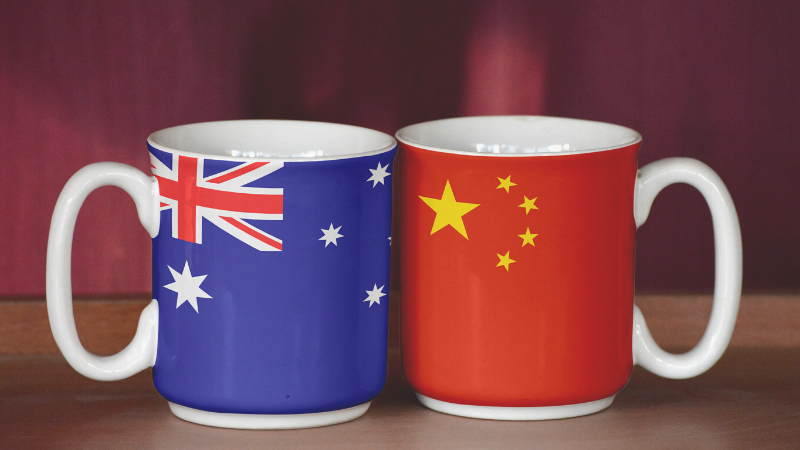PERSPECTIVES | Race and politics in Australia's COVID-19 responses
May 05 2020

By Chengxin Pan
As the COVID-19 pandemic wreaks global havoc, we are increasingly hearing Australia described as the ‘envy of the world’ for its management of this public health crisis. Within a relatively short time span, the country has managed to flatten the curve. Its total case numbers and death toll are markedly lower than many comparable countries, especially those in Europe. According to an infectious disease expert, ‘Australia is a good story.’
Beneath this welcome medical success story, however, lies a more mixed picture of political and media responses to the pandemic. On this score, it is less certain whether Australia can claim to be the ‘envy of the world’.
Disease outbreaks have historically been intertwined with sensitive issues of race, identity, and politics, and this time has proven no different. US President Donald Trump, for example, has gone out of his way to racialise the pandemic by renaming it ‘the Chinese virus’. While Australian politicians have praised the Australian-Chinese community in particular for their role in the coronavirus response, such praise has come against the backdrop of increased racist attacks on members of this community, and on other Australians of Asian background, who have been deliberately or subconsciously associated with the disease by some quarters of the Australian media. On January 29 the front page of the Melbourne-based tabloid newspaper the Herald Sun was emblazoned with an image of a red surgical mask featuring the words, ‘Chinese virus pandamonium [sic]’. The Sydney-based Daily Telegraph’s front page headline blared, ‘China kids stay home’. Just last week, the Herald Sun was at it again: more than half of its front page was the mugshot of a respected Chinese virologist, along with the provocative headline ‘Operation Batman’.
Implying a link between the virus and the Chinese, these headlines and visual symbols tap into a particular kind of racist trope in Australia that dates back to the nineteenth century. During the 1881-82 Sydney smallpox epidemic, for example, smallpox was dubbed a ‘Chinese disease'.[1] Nearly one and a half centuries later, it is evident that certain sections of the press have not deviated very far from the ‘Yellow Peril’ bigotry that ‘the Chinese were an insanitary and wicked race who was prone to infectious diseases’.[2]
While this kind of blatantly racist wordplay might be unique to the sensationalist tabloid press, the racialisation of the virus has taken more subtle but no less troubling forms in wider society. The lingering suspicion towards face masks in the Australian public is but one example, with such suspicion at times turning into hostility to people wearing them, particularly those of Asian background. In Hobart, a student from Hong Kong was physically assaulted for wearing one. As other similar incidents testify, wearing masks has been equated with having the disease. With footage of mask-wearing Chinese and other Asian people during the pandemic constantly feeding into Australian living rooms and images splashed on newspapers, it is perhaps no surprise that masks, diseases and things ‘Asian’ have all become tangled up, if only subconsciously. One piece in traveller.com.au calls it ‘Asia’s face mask obsession’, which reflects a kind of ‘herd mentality’ and is ‘ingrained into their cultural psyche in a way it isn’t here’. A recent Washington Times opinion piece went so far as to warn that wearing masks could turn ‘Americans into good Asian comrades’.
While outright racism in mainstream media and politics has become rare over time, both subtle and not-so-subtle racist slurs and stereotypes, if repeatedly frequently without being challenged, can serve as capillary dog-whistling that incites fear, prejudice and hatred. The surge of reported cases of racial abuses and violent attacks on citizens, residents and visitors of Chinese and other Asian backgrounds in Australia is testimony to the harmful consequences of racial profiling in a time of crisis. Such profiling can also impact on public policy: while it was right for Australia to ban travellers from China and South Korea, there was an initial reluctance to apply similar travel restrictions to Western countries like Italy and the United States, which one might reasonably speculate had some grounding in race as well as politics. As it turns out, the US was the most common country visited in half of all Australian cases acquired overseas.
As enduring as this racialised prism is, so too is the manner in which the pandemic has been interpreted through the dichotomy between democracy and authoritarianism. From the outset, the outbreak of the coronavirus in Wuhan has been widely attributed in part to China’s ‘repressive political regime’: the silencing of whistleblowers, the cover-up of the outbreak, and the lack of transparency and free speech have all been seen as responsible for the unfolding disaster. On March 8, Channel 9’s 60 Minutes program zeroed in on this, stating that ‘the breadth of [the pandemic] is because of the authoritarianism and the lack of press freedom in the mainland.’ Coalition backbencher Tim Wilson agreed: ‘The Chinese Communist Party’s deliberate strategy to suppress awareness of the virus led to this pandemic’. As well as used to understand the initial failings of the Chinese government, the authoritarianism angle is also invoked to characterise China’s control measures. As one China analyst observed, ‘Beijing’s draconian crackdown, paired with intense scrutiny and intrusion into the daily lives of ordinary citizens, has further consolidated power in the hands of President Xi Jinping and the Chinese Communist Party’.
No doubt, China’s opaque and overly hierarchical bureaucracy, as well its favouring of censorship as one form of control, contributed to the initial bungled response to the outbreak, and some of its strict measures in controlling the spread of the virus do not look ‘pretty’. However, an over-use of the ‘authoritarianism’ prism can be counterproductive. If China’s authoritarian regime is largely to blame for the disaster, this might unwittingly give a false sense of security and superiority among leaders of ‘liberal democratic’ countries, who might be led to think that such bungles could not happen at home. But one need only think of the Ruby Princess debacle, which was responsible for more than 700 cases and at least 21 deaths in Australia, to recognise that this is untrue.
Meanwhile, relentless and unqualified criticisms of China’s lockdown and quarantine measures as ‘draconian,’ ‘excessive’, ‘flat-out backward’, and ‘dystopian’ are not particularly helpful when the main battle during the pandemic is not between democracy and authoritarianism, but between people’s lives and the vicious, pervasive virus. By describing some successful measures as ‘authoritarian’, the discourse almost automatically makes considering the adoption of such measures in Australia and other Western countries more difficult. In this particular debate, there is a lot of hand-wringing about whether Australia could or should ‘learn from Xi Jinping’s tactics’. Some commentators have opined that ‘in fighting a disease that has come from China, Australia has become increasingly, well, like China’. As the example in the UK shows, such political, instead of medical, reasoning informed British scientists’ recommendations on lockdown. Believing that China’s drastic actions ‘would never be acceptable in a democracy like the UK’, they initially refrained from considering such measures. Britain changed course only after Italy’s lockdown ‘open[ed] up the policy space’. One wonders how many lives could have been saved had such measures been adopted sooner.
There is politics in almost everything, but not everything can be diagnosed exclusively through the same political, or racial for that matter, lens, ad infinitum. Australia’s success with its pandemic response, helped in no small parts by its geography as well as the hard work and sacrifice of its healthcare workers and citizens, is not because of, but despite, such racialised and politicised commentaries and responses.
Dr Chengxin Pan is an Associate Professor of International Relations at Deakin University and a co-editor of the Global Political Sociology book series (Palgrave Macmillan). He is the author of Knowledge, Desire and Power in Global Politics: Western Representations of China’s Rise (Edward Elgar, 2012), and has published in many international journals such as European Journal of International Relations, Review of International Studies, The Pacific Review, International Relations of the Asia-Pacific, and Australian Journal of International Affairs.
Sources
[1] Greg Watters, ‘Contaminated by China’, in Walker, D., Sobocinska, A. (eds), Australia’s Asia: From Yellow Peril to Asian Century, UWA Publishing, Perth, 2012.
[2] Ibid.

